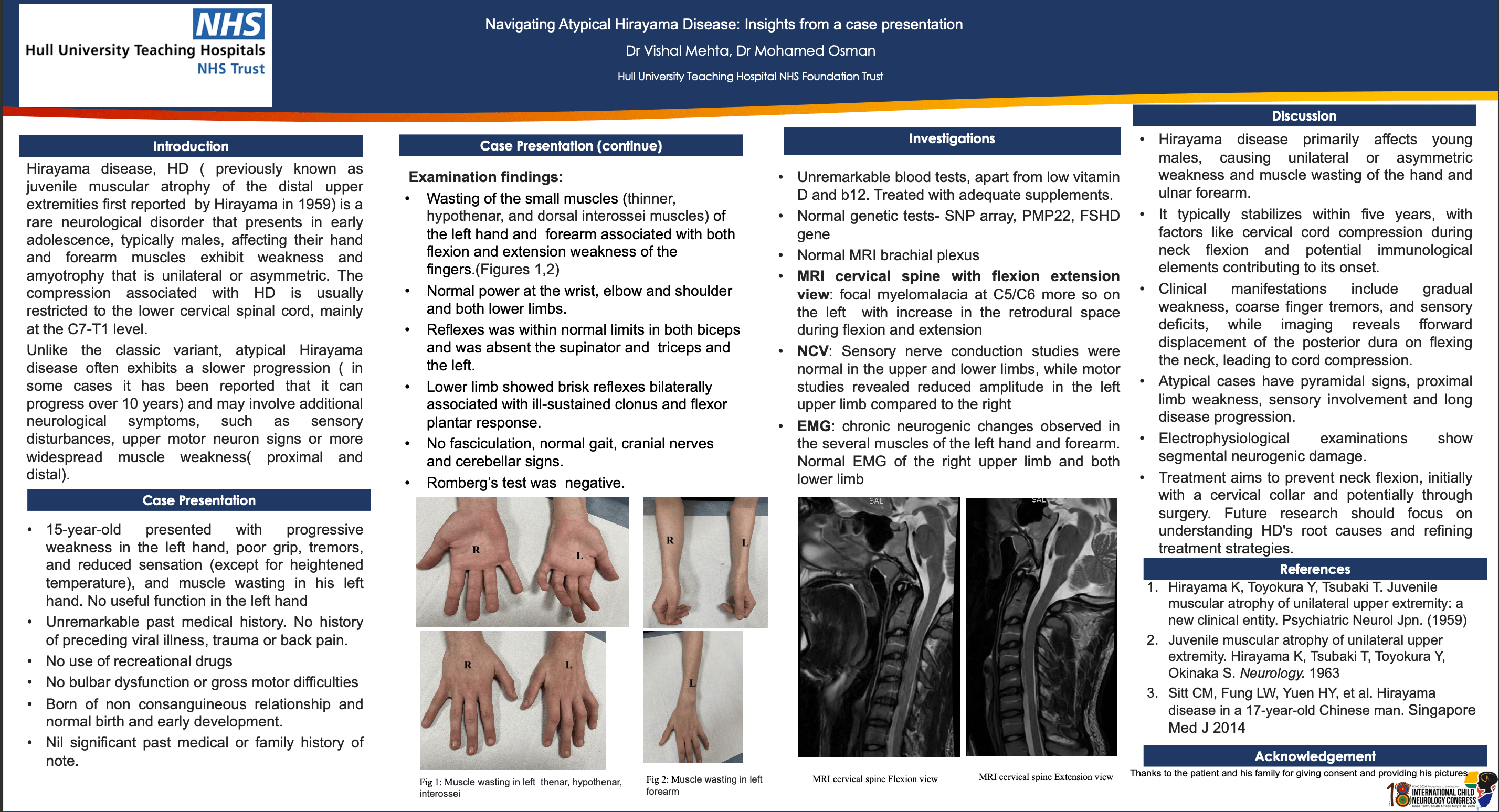Navigating Atypical Hirayama Disease: Insights From A Case Presentation
Hirayama Disease (HD) is a rare neurological disorder typically seen in early adolescence, mainly affecting males. It is characterized by unilateral or asymmetric weakness and muscle wasting in the hand and forearm due to compression in the lower cervical spinal cord, particularly at the C7-T1 level. An atypical variant of HD can progress more slowly and exhibit additional neurological features of pyramidal signs and sensory deficits.
In our case, a 15-year-old male presented with a gradual onset of progressive distal weakness in the left hand and forearm with muscle wasting, and reduced sensation. Examination revealed decreased strength in the left arm, significant muscle wasting of forearm and hand muscles, and reduced sensation below left elbow, and brisk lower limb reflexes bilaterally with ill sustained ankle clonus.
Extensive diagnostic tests, including blood work, genetic testing, neuroimaging and, neurophysiology studies were performed. Notably, MRI scans of the cervical spine revealed myelomalacia at the C5/C6 level, along with expansion of the posterior epidural space on flexion view raising suspicion of HD. EMG showed chronic neurogenic changes in the left upper limb with normal sensory nerve conduction studies compatible with HD.
Management involved wearing a cervical collar to prevent neck flexion, and neurosurgical intervention.
This case highlights the complexity of diagnosing Hirayama Disease and the importance of ruling out other conditions through comprehensive work up. Treatment strategies aim to prevent further neck flexion and may include surgical intervention.
Vishal Mehta
Hull University Teaching Hospital NHS foundation trust
United Kingdom
Mohamed Osman
Hull University Teaching Hospital NHS foundation trust
United Kingdom

Vishal Mehta
Hull University Teaching Hospital NHS foundation trust
United Kingdom